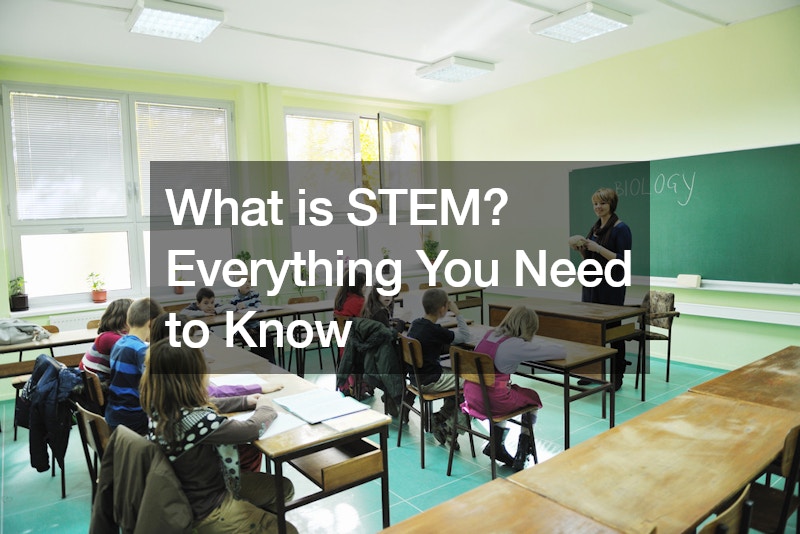In today’s rapidly advancing world, the demand for individuals skilled in science, technology, engineering, and mathematics (STEM) is higher than ever before. STEM education has become a cornerstone of modern learning, preparing students to excel in a wide range of fields and industries. But what exactly is STEM, and why is it so important? In this comprehensive guide, we’ll explore everything you need to know about STEM education, from its core principles to its real-world applications.
Understanding STEM:
STEM is an acronym that stands for science, technology, engineering, and mathematics. These four disciplines are interconnected and mutually reinforcing, providing the foundation for innovation, problem-solving, and critical thinking.
Traditionally, these subjects were taught in isolation, but the shift towards integrated STEM education has revolutionized the way students learn and engage with these concepts.
The Importance of STEM Education:
STEM education plays a crucial role in preparing students for the challenges and opportunities of the 21st century. In an increasingly technology-driven world, proficiency in STEM subjects is essential for success in both academic and professional settings. STEM skills are highly sought after by employers across a wide range of industries, from healthcare and manufacturing to finance and information technology.
Key Components of STEM Education:
STEM education goes beyond simply teaching science, technology, engineering, and mathematics as individual subjects. It emphasizes hands-on learning, problem-solving, and collaboration, encouraging students to apply their knowledge in real-world contexts. Integrated STEM curriculum integrates these disciplines, allowing students to see the connections between them and develop a deeper understanding of how they work together.
STEM schools are educational institutions that focus specifically on providing high-quality STEM education to students. These schools often offer specialized programs and resources designed to engage students in STEM learning from an early age. STEM schools may incorporate project-based learning, robotics clubs, coding classes, and other activities to foster students’ interest and proficiency in STEM subjects.
The Future of STEM Education:
As technology continues to evolve and shape the world around us, the importance of STEM education will only continue to grow. STEM skills are not only essential for success in the workforce but also for addressing some of the most pressing challenges facing society, such as climate change, healthcare, and cybersecurity. By investing in STEM education, we can empower future generations to become innovators, problem-solvers, and leaders in their fields.
Challenges and Opportunities in STEM Education:
STEM education faces various challenges but also presents significant opportunities for students, educators, and policymakers. One primary challenge is the lack of access to resources and quality education, particularly in underserved communities. This disparity in resources can perpetuate inequities in STEM participation and outcomes. Additionally, there is a shortage of qualified STEM teachers, especially in critical subjects like mathematics and computer science.
Furthermore, traditional teaching methods in STEM subjects may not always engage students effectively or foster deep learning. Addressing these challenges requires a multifaceted approach, including increased funding for STEM programs, targeted teacher training and professional development, and efforts to promote diversity and inclusion in STEM fields.
However, amidst these challenges lie numerous opportunities for improvement and innovation in STEM education. The growing emphasis on hands-on, inquiry-based learning approaches, such as project-based learning and maker education, can enhance student engagement and cultivate essential skills like problem-solving, collaboration, and critical thinking. Integrating technology into STEM instruction can also facilitate personalized learning experiences and provide access to educational resources beyond the classroom.
By addressing the challenges and seizing the opportunities in STEM education, stakeholders can ensure that all students have access to high-quality STEM learning experiences that prepare them for success in an increasingly complex and technology-driven world.
STEM Education Beyond the Classroom:
While STEM education primarily occurs within the confines of classrooms, there is a growing recognition of the importance of extending learning opportunities beyond traditional settings. Out-of-school STEM programs, extracurricular activities, and community initiatives play a crucial role in supplementing classroom instruction and fostering students’ interest and proficiency in STEM subjects.
One notable avenue for extending STEM education beyond the classroom is through afterschool programs and clubs focused on robotics, coding, engineering, and scientific exploration. These programs provide hands-on learning experiences, opportunities for experimentation, and exposure to real-world challenges, thereby complementing and reinforcing concepts taught in school.
Furthermore, informal learning environments such as science centers, museums, and nature reserves offer interactive exhibits, workshops, and demonstrations that engage students in STEM topics outside of academic settings. These immersive experiences spark curiosity, encourage exploration, and deepen understanding by connecting abstract concepts to tangible phenomena.
By leveraging out-of-school STEM opportunities, educators and policymakers can cultivate a culture of lifelong learning, curiosity, and innovation that extends beyond the boundaries of the classroom and prepares students for success in an increasingly complex and interconnected world.
Conclusion:
In conclusion, STEM education is a vital component of modern learning, equipping students with the skills and knowledge they need to thrive in a rapidly changing world. By integrating science, technology, engineering, and mathematics and emphasizing hands-on learning and problem-solving, STEM education prepares students for success in both academic and professional settings. As we look to the future, the continued advancement of STEM education will be essential for driving innovation, fostering economic growth, and addressing the challenges of the 21st century.
.

